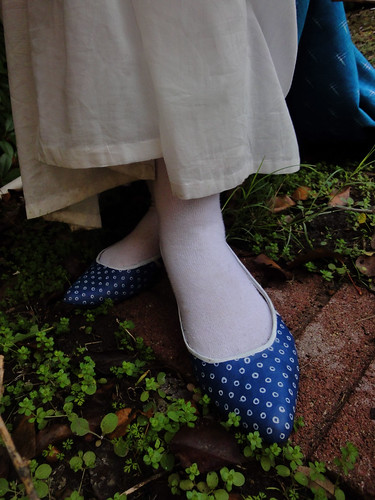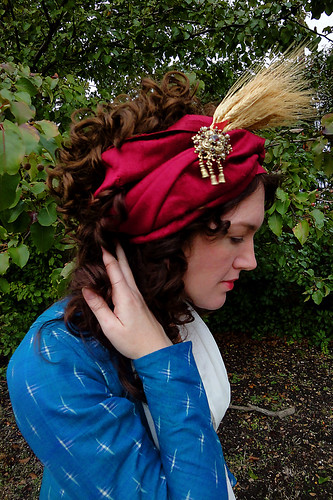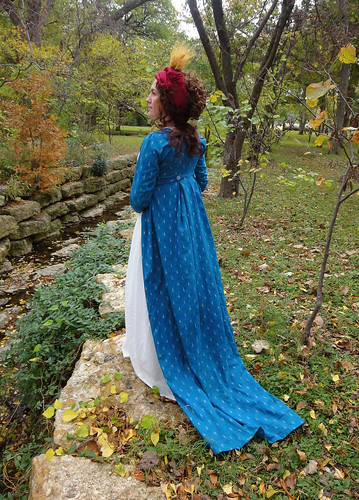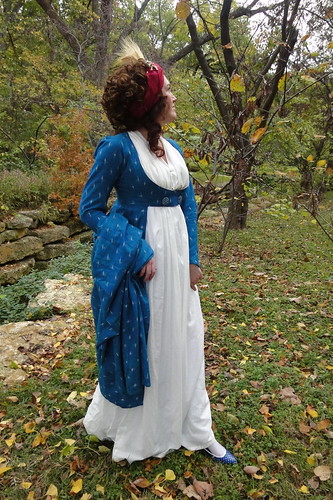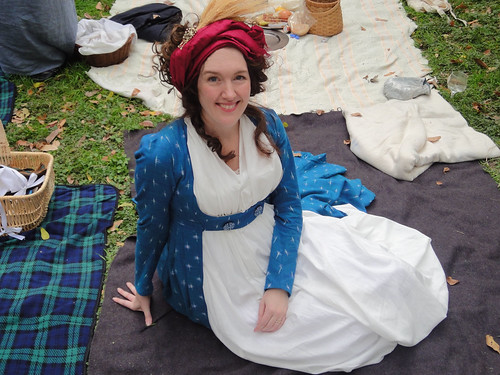I LOVE making silly props to go with my silly costumes, and our Georgian picnic gives me the perfect opportunity to research and recreate 18th and early 19th c. toys and games every year.
The first new toy that we tried this year was the Chinese yo-yo, or diabolo (diable in French), which has proven a bit hard to research, but several online articles mention that it was called "devil on two sticks" in England, although they don't mention a source for that tidbit. But illustrations of adults and occasionally children playing with diabolos show up from time to time during this period, and I love how beautiful the people look while playing this game.

I first tried using a wooden diabolo that I ordered online from a English historical toy site. But even though the wooden diabolo looked like the illustrations, it was so lightweight and hard to work that even my friends who are jugglers and quite good at the diabolo had a hard time working with it.
So we switched over to a modern diabolo, and that worked much better. Cynthia, our resident diabolo expert, was able to give us lessons, and several people were able to able to get it going pretty well and even catch a few tosses after a bit of practice. But nobody did it with the same elegance and grace as Cynthia! Clearly, I need to buy a modern diabolo and spend the next 12 months practicing so I can do this next year. :)
I also brought a variety of small wooden toys, such as a top, cup and ball, and a yo-yo. The top and cup helped entertain the kids, but I really brought the yo-yo for the adults. I've always been charmed by this 1790's illustration of a woman playing with a yo-yo, which was known as a bandalore, l'emigrette, or quiz in the period. If internet articles are to believed, the yo-yo was a very popular toy for both adults and children in the late 18th c., especially among the nobility, and the action of the toy was equated with French nobility and their emigration out, then back in to the country during the French Revolution.
For my yo-yo, I simply bought a bamboo yo-yo from World Market, then painted it with concentric circles, which seems to be the most common form of decoration. Of course, French revolutionary colors seemed appropriate as well.
But the toy that I was the most excited about was my period kite. I used the instructions found on the PBS Ben Franklin website to make my kite, and I made it with handmade paper, linen ties on the tail, and I painted it with a simple triangle border, which was inspired by this 18th c. pear top kite. I was worried that it would never fly, but it actually worked pretty well! Although it was a bit unstable and really preferred to crash spectacularly into the ground, we did get it up to a nice cruising altitude one time, as seen in the photo at the top of this post.
I had a blast running back and forth down the clearing with my fellow kite enthusiast, Ginger, and we even drew quite a crowd of onlookers while we were flying it. It was a blast, and I can't wait to try it again next year!
I'm always looking for new period toy and games to keep us entertained at our events. We've also played Graces and battledore and shuttlecock in the past, and I'm hoping to try ninepins or lawn bowling next year (if I can find an affordable set). If you know of any other good Georgian games that can be played outdoors, I'd love to hear about them! And just for fun, check out this excellent site for other 18th century toys and games in period art.

















